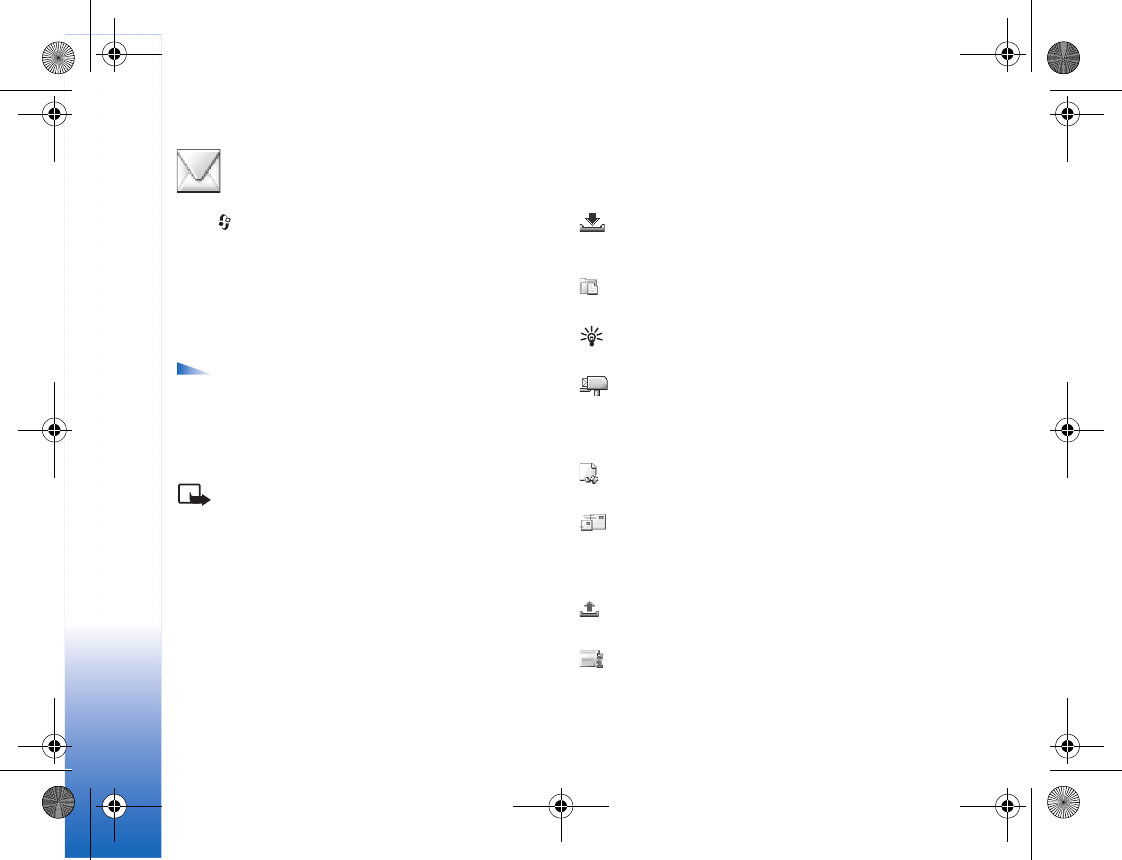
Messaging
42
Messaging
Press , and select Messaging. In Messaging, you can
create, send, receive, view, edit, and organise text
messages, multimedia messages, e-mail messages, and
special text messages containing data. You can also
receive messages and data through a Bluetooth
connection, receive Web service messages, cell broadcast
messages, and send service commands.
Options in the Messaging main view are Open,
Create message, Connect (shown if you have defined
mailbox settings)/Disconnect (shown if a connection
to the mailbox is active), SIM messages, Cell
broadcast, Service command, Settings, Help, and
Exit.
Note: These functions can only be used if they are
supported by your network operator or service
provider. Only devices that offer compatible
multimedia message, or e-mail features can receive
and display these messages. Some networks might
provide the recipient device with a Web page link to
view multimedia messages.
When you open Messaging, you can see the New message
function and a list of folders:
Inbox—Contains received messages except e-mail
and cell broadcast messages. E-mail messages are stored in
the Mailbox.
My folders—For organising your messages into
folders.
Tip! Organise your messages by adding new folders
under My folders.
Mailbox—In Mailbox you can connect to your
remote mailbox to retrieve your new e-mail messages or
view your previously retrieved e-mail messages offline. See
‘E-mail’, p. 54.
Drafts—Stores draft messages that have not been
sent.
Sent—Stores the last 15 messages that have been
sent excluding messages sent using a Bluetooth
connection. To change the number of messages to be
saved, see ‘Other settings’, p. 56.
Outbox—A temporary storage place for messages
waiting to be sent.
Reports—You can request the network to send you a
delivery report of the text messages and multimedia
messages you have sent (network service). Receiving a
R1105_en.book Page 42 Monday, February 7, 2005 1:31 PM


















